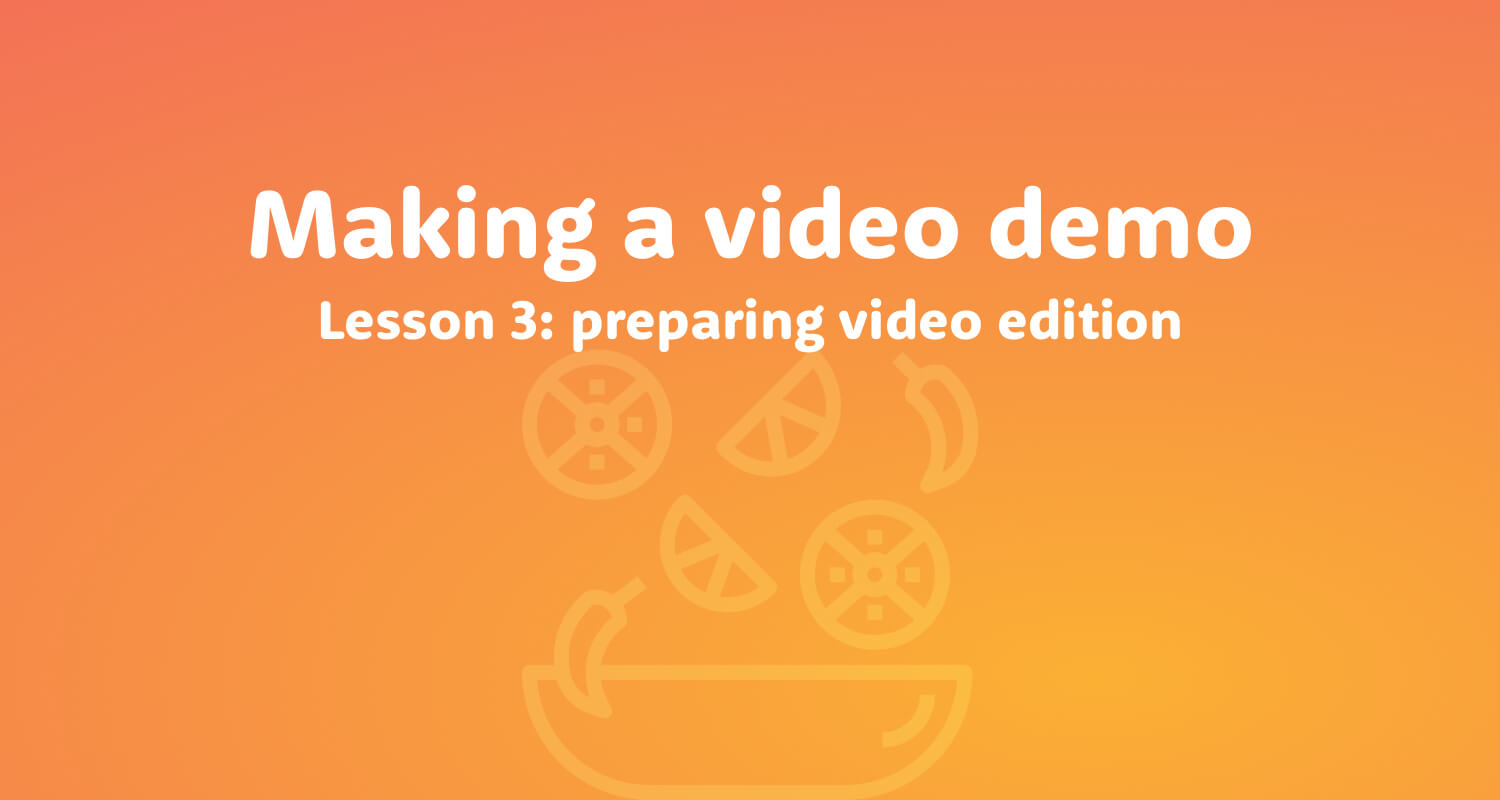
Create your Demo Video with (Practically) No Budget — 103 — Preparing the Video Edition
In the previous article, we talked about building a strong scenario. Now it’s time to dive into creation! But… where to begin?
The first mistake would be to start edition in After Effects and gradually create your video, by switching with Illustrator and Photoshop. Can you imagine building a house without a construction plan? Well, you can’t be efficient without some essential prerequisites.
Brace yourself, and in the end you can obtain something like this!
1. Before creation, organization

Technical requirements
These are my favorite tools-of course there are others that can help you get the job done right! But these I strongly recommend.
- A simple note book for listing scenes and elements of the video.
- Illustrator and Photoshop for creating and preparing the elements to be animated.
- After Effects for edition of animations and scenes.
- Premiere Pro for final video, music and sound montage (music and voice-over are created by professionnals I asked).
Make sure that you know how to do every part of your video before starting edition.
Sometimes you’ll need to dedicate time to learn some sections you don’t exactly know how to create. If something is really too complicated, you could need to delegate and this can quickly exceed your initial budget.
I recommend Mattrunks, Openclassroom and School of Motion to learn some technical basics. These sites contain free and paying tutorials.
Have a reference document
Explain with short descriptions how the video will be divided. Before you start working on AE, create a reference document: it will help you remind of your folders and elements.
Cut your scenario by scenes: it will represent your folders organization in your computer.Describe every scenes actions in details.Explain the technical way to do actions.List the elements you will need in each scene.

Organize your internal folder
The more you sort your files, the more efficient you will be.

2. Now, let’s get started!
Once all the requirements are done, it’s so much easier to start creating!
You already know the final video format
In all softwares you use and creation you make, respect the same video format. This way you won’t have bad surprises when switching from a software to another.
For sharing purposes, Youtube and Vimeo are great.
Always work on the highest definition resolution, so you can export your video from 144p to 1080p quality.

Creation step by step is the key

Thanks to your beautiful reference document, you can easily cut your work in tasks.
In After Effects, each scene is a composition to export individually, in order to send it later into Premiere Pro. Also files to export aren’t too large. Sometimes export time can take hours, because of 3D effects and others. If you make one composition for all scenes, you will be bothered every time you’ll need to change a little detail and export again.
I tell more about export settings in the next lesson.
Iteration is your friend
When you’ll start working on your video, you may realize that some elements’ name or structure can request modifications. This is completely normal. You can’t always do something perfect from the first shot. That’s also why it is important to work on a precise scenario before so you can lean on your guidelines.
Put parts of the puzzle together

As a cook recipe, you gradually put together the scenes of the video in a final Premiere Pro project. For example, here’s a scene I obtained from AE that I import in PP:
During this step, correct imperfections, time transitions between scenes. You obtain a first result without audio that you will modify by integrating music, voice over and subtitles (if needed). Be careful, this last part can quickly turn out to be the most expensive of your budget.
If your funds allow it, you can ask a professional to create a music specially for your video. In the Kumbu case, I bought a music and I adapted it to fit with the video.
BeatPick is a good website to find an affordable music for your video.
On the other hand, I asked a professional to be the voice-over of the video. This is a useful investment to win your video in credibility, but you can do it yourself if you already have the right equipment and voice.
I found a perfect and affordable voice-over in Voices website.
Then, you integrate music and voice into your project. You could need to go back to After Effects to change details in order to synchronize all the content together. Again, iteration is your friend.
You finally arrive at the export of your video. Select the Youtube/Vimeo format and it is done!

Next lesson: see in details how I created the first scene of the Kumbu video!
Thanks to Arnaud Bressier.








